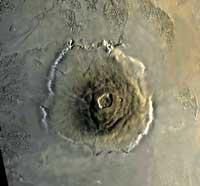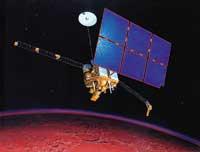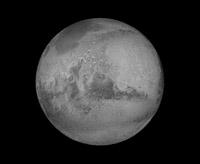Does it have life on Mars?
1999/09/01 Kortabarria Olabarria, Beñardo - Elhuyar Zientzia Iturria: Elhuyar aldizkaria
Although it is now a dead planet, of very small magnetic field and without volcanoes, it has always been considered that Mars has had a structure similar to that of the Earth, that is, a nucleus of iron, a mantle of silicate and a crust of rocks. And it has similarities in other things: the day lasts 24 hours 37 minutes, has seasons, has mists in its sky, preserves remains of rivers and glaciers, etc. Has there been life on Mars?
By knowing the characteristics of the planet, the study of meteorites has given rise to the theories that exist in this regard. The best known is the one published in 1996 by researcher David McKay in the journal ‘Science’. McKay claims that most meteorites are based on collisions between asteroids. A few, very different from the rest, are known as CNS, and they may be from Mars, since the minerals that are part of their composition have been produced in media similar to that of Mars. Of some, gas has been extracted, which is obtained in the same proportion as that studied by the Viking probes.
The meteorite ALH84001 is the oldest of the 12 coming from Mars. With 4,500 million years, it can be thought to be part of the ancient rocks of Mars. This meteorite has internal cracks produced 4,000 million years ago, probably due to shock waves. The introduction of water in these cracks and microbial action led to the formation of calcium carbonate nodules, very similar to those produced by bacteria on Earth. Inside the structure of the nodules are seen some that can be microfossils of the nanobacterias. The meteorite ALH84001 was discovered in 1984.
Another iconic meteorite, the Nakhla, was collected in Egypt in 1911. In his cracks has been found a clay of 700 years ago, which contains possible fossils of various microbes.
Finally, in March of this same year, McKay himself presented another meteorite with fossil microbes, 165 million years old, which fell in India in 1965. "We don't want to convince anyone," said the researcher, "but we want people to be open."

Gai honi buruzko eduki gehiago
Elhuyarrek garatutako teknologia






